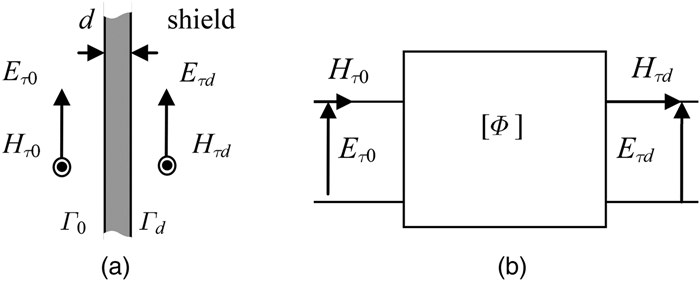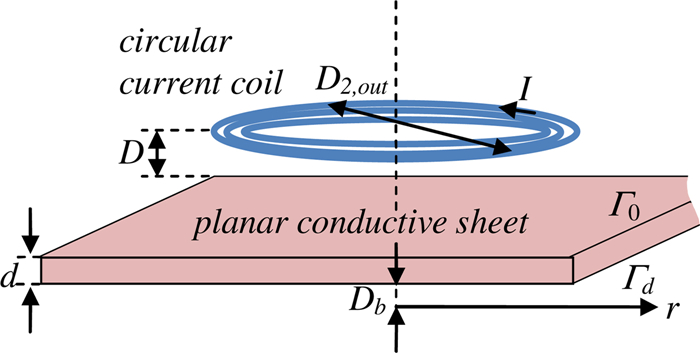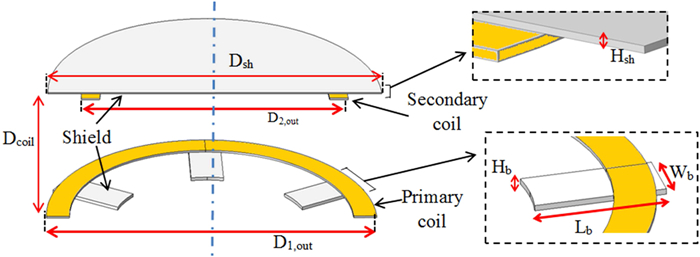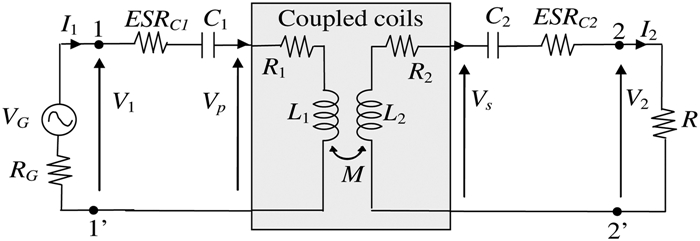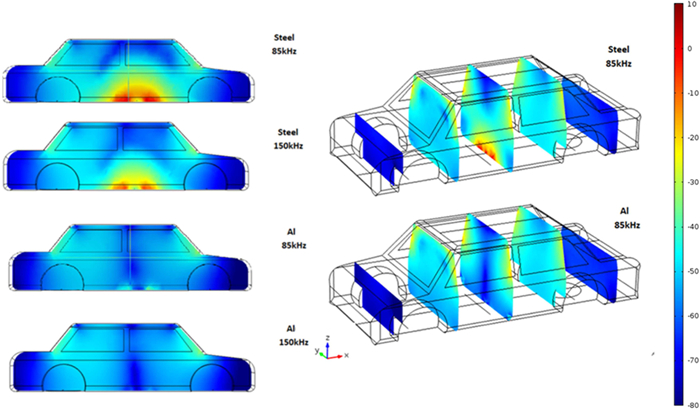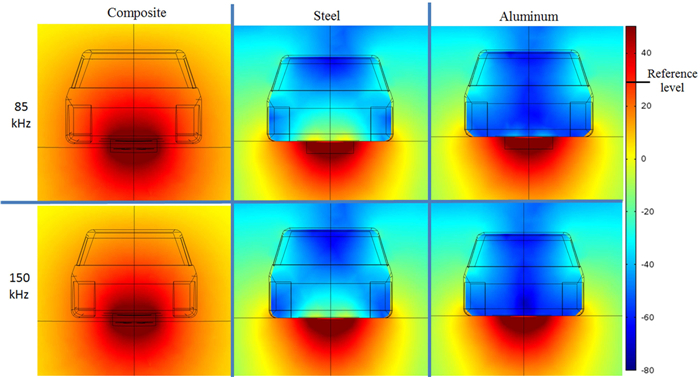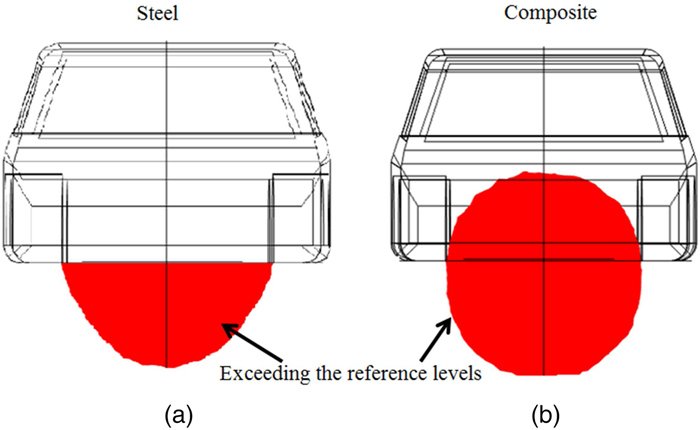Numerical characterization of the magnetic field in electric vehicles equipped with a WPT system
-
1.
Department of Industrial and Information Eng. and Economics, University of L’Aquila, L’Aquila, Italy
-
2.
Department of Astronautics, Electrical and Energetic Eng., Sapienza University of Rome, Rome, Italy
More Information
-
Author Bio:
 Tommaso Campi
Tommaso Campi received the Laurea degree in telecommunication engineering from the University of L’Aquila, Italy, in 2014. He is currently working toward the Ph.D. degree in electrical engineering at the University of L’Aquila. His research interests include wireless power transfer and electromagnetic compatibility. He was the recipient of the Best Poster Presentation at the IEEE CEFC 2014, Annecy, France.
 Silvano Cruciani
Silvano Cruciani received the Laurea degree in information and automation engineering in 2010, and the Ph.D. degree in electrical engineering in 2015, both from the University of L’Aquila, L’Aquila, Italy. He is currently a post-doctoral researcher at the University of L’Aquila. His main research interests include numerical methods, electromagnetic wave propagation in complex media and wireless power transfer.
 Valerio De Santis
Valerio De Santis received the Laurea degree (with honours) in telecommunication engineering and the Ph.D. degree in electrical and computer engineering, both from the University of L’Aquila, L’Aquila, Italy, in 2006 and 2010. He joined the Foundation for Research on Information Technologies in Society, IT’IS Foundation, Switzerland, from 2011 to 2013, holding the position of Project Leader and he was an Assistant Professor at the Nagoya Institute of Technology, Nagoya, Japan, from January to March 2015. He is currently a Fellow Researcher at the University of L’Aquila, L’Aquila, Italy. His current research interests include biological effects of electromagnetic fields, electromagnetic compatibility, and numerical methods and techniques. He is a senior member of IEEE and Secretary of IEEE-ICES-TC95-SC6 Commission. Dr. De Santis received the Second Best Student Paper Award at the Bioelectromagnetics Society (BEMS) Annual Meeting, Cancun, Mexico, 2006, the Best Student Paper Award at the IEEE International Symposium on EMC, Honolulu, HI, USA, in 2007, and the Leo L. Beranek Travel Grant at the IEEE International Symposium on EMC, Detroit, MI, USA, in 2008.
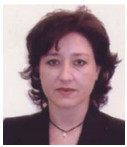 Francesca Maradei
Francesca Maradei received the Laurea degree in electrical engineering (
cum laude) from Sapienza University of Rome in 1992, the Diplome d'Etudes Approfondies (DEA) in electrical engineering from the INPG, Laboratoire d'Electrotechnique de Grenoble, France, in 1993, and the Ph.D. degree in Electrical Engineering from the Sapienza University of Rome, Italy, in 1997. She joined the Department of Electrical Engineering at the Sapienza University in 1996 where she is currently professor. She has authored more than 150 technical papers in the field of computational electromagnetics and EMC. She received the 2015 Laurence Cumming Award for outstanding service to the IEEE EMC society over the last ten years including a term as President, two terms as a member of the Board of Directors, service as chapter coordinator, and contributing to the global outreach and overall success of the EMC Society. She received also the
James Melcher Price Paper Award with the paper “Analysis of upset and failures due to ESD by the FDTD-INBCs method”,
IEEE Trans. Industry Applications, vol. 38, no. 4, Jul./Aug. 2002, pp. 1009–1017; the
Oral Presentation Best Paper Award at the
International Symposium on Electromagnetic Compatibility - EMC ROMA 1994, Rome, Italy, and the
Poster Presentation Best Paper Award at the
EMC EUROPE 2000, Bruges, Belgium. Prof. Maradei was President (2010–11) of the IEEE Electromagnetic Compatibility Society. She was an Associate Editor of the IEEE Transactions on Electromagnetic Compatibility from 1999 to 2000. She is a member of the EMC Europe International Steering Committee, and since 1998 she is a member of the Editorial Board of IEEE Conference on Electromagnetic Field Computation (CEFC) and of COMPUMAG Conference.
 Mauro Feliziani
Mauro Feliziani received the degree in electrical engineering from the University of Rome La Sapienza, Rome, Italy, in 1983. From 1987 to 1994 he was with the University of Rome “La Sapienza” as a Researcher (1987–1990), Assistant Professor (1990–1992) and Associate Professor (1992–1994). In 1994 he joined the Unversity of L’Aquila, Italy, as Full Professor of Electrical Engineering. He is the author or coauthor of more than 150 papers published in the fields of electromagnetic compatibility (EMC) and in electromagnetic field numerical computation. His current research interests include RFID, ultra-wideband, wireless power transfer, wireless communications and bioelectromagnetics. Prof. Feliziani was the recipient of the Best Paper Award of the IEEE Transactions on Industry Applications in 1995, the Electrostatics Process Committee and the EMC Europe Symposium, in 2000. He was also co-author of: Best Student Paper at the IEEE International Symposium on EMC, Honolulu, USA, 2007; Second Best Student Paper at the BEMS Annual Meeting, Cancun, Mexico, 2006; Best Poster Presentation at the IEEE CEFC 2014, Annecy, France. From 1995 to 2000, he was an Associate Editor of the IEEE Transactions on Electromagnetic Compatibility. In March 2003, he was the Guest Editor of a special issue of the IEEE Transactions on Magnetics. In 2008, he was the Guest Editor of a Special Section of COMPEL. In 1994 he was co-founder of EMC Europe Symposium. He was the General Chairman of the EMC Europe Symposium, Sorrento, Italy, in 2002, and of the EMC Europe Workshop, Rome, in 2005. He was the Technical Program Committee Chair of EMC Europe 2012, Rome, Italy. He was the Chair of the International Steering Committee of the EMC Europe Symposium 2012–2015
-
Corresponding author:
T. Campi Email: tommaso.campi8888@gmail.com
-
Abstract
This paper deals with the numerical evaluation of the magnetic field emitted by a wireless power system (WPT) in an electric vehicle (EV). The numerical investigation is carried out using a finite element method (FEM) code with a transition boundary condition (TBC) to model conductive materials. First, the TBC has been validated by comparison with the exact solution in simple computational domains with conductive panels at frequencies used in WPT automotive. Then, the FEM with TBC has been used to predict the field in an electric car assuming the chassis made by three different materials: steel, aluminum, and fiber composite. The magnetic field source is given by a WPT system with 7.7 kW power level operating at frequencies of 85 or 150 kHz. The calculated magnetic field has been compared with the International Commission on Non-Ionizing Radiation Protection (ICNIRP) reference level demonstrating compliance for an EV with metallic (steel or aluminum) chassis. On the contrary, a fiber composite chassis is much more penetrable by magnetic fields and the reference level is exceeded.
-
About this article
Cite this article
Campi T, Cruciani S, De Santis V, Maradei F, Feliziani M. 2017. Numerical characterization of the magnetic field in electric vehicles equipped with a WPT system. Wireless Power Transfer 4(2): 78-87 doi: 10.1017/wpt.2017.5
|
Campi T, Cruciani S, De Santis V, Maradei F, Feliziani M. 2017. Numerical characterization of the magnetic field in electric vehicles equipped with a WPT system. Wireless Power Transfer 4(2): 78-87 doi: 10.1017/wpt.2017.5
|









 Tommaso Campi received the Laurea degree in telecommunication engineering from the University of L’Aquila, Italy, in 2014. He is currently working toward the Ph.D. degree in electrical engineering at the University of L’Aquila. His research interests include wireless power transfer and electromagnetic compatibility. He was the recipient of the Best Poster Presentation at the IEEE CEFC 2014, Annecy, France.
Tommaso Campi received the Laurea degree in telecommunication engineering from the University of L’Aquila, Italy, in 2014. He is currently working toward the Ph.D. degree in electrical engineering at the University of L’Aquila. His research interests include wireless power transfer and electromagnetic compatibility. He was the recipient of the Best Poster Presentation at the IEEE CEFC 2014, Annecy, France.  Silvano Cruciani received the Laurea degree in information and automation engineering in 2010, and the Ph.D. degree in electrical engineering in 2015, both from the University of L’Aquila, L’Aquila, Italy. He is currently a post-doctoral researcher at the University of L’Aquila. His main research interests include numerical methods, electromagnetic wave propagation in complex media and wireless power transfer.
Silvano Cruciani received the Laurea degree in information and automation engineering in 2010, and the Ph.D. degree in electrical engineering in 2015, both from the University of L’Aquila, L’Aquila, Italy. He is currently a post-doctoral researcher at the University of L’Aquila. His main research interests include numerical methods, electromagnetic wave propagation in complex media and wireless power transfer.  Valerio De Santis received the Laurea degree (with honours) in telecommunication engineering and the Ph.D. degree in electrical and computer engineering, both from the University of L’Aquila, L’Aquila, Italy, in 2006 and 2010. He joined the Foundation for Research on Information Technologies in Society, IT’IS Foundation, Switzerland, from 2011 to 2013, holding the position of Project Leader and he was an Assistant Professor at the Nagoya Institute of Technology, Nagoya, Japan, from January to March 2015. He is currently a Fellow Researcher at the University of L’Aquila, L’Aquila, Italy. His current research interests include biological effects of electromagnetic fields, electromagnetic compatibility, and numerical methods and techniques. He is a senior member of IEEE and Secretary of IEEE-ICES-TC95-SC6 Commission. Dr. De Santis received the Second Best Student Paper Award at the Bioelectromagnetics Society (BEMS) Annual Meeting, Cancun, Mexico, 2006, the Best Student Paper Award at the IEEE International Symposium on EMC, Honolulu, HI, USA, in 2007, and the Leo L. Beranek Travel Grant at the IEEE International Symposium on EMC, Detroit, MI, USA, in 2008.
Valerio De Santis received the Laurea degree (with honours) in telecommunication engineering and the Ph.D. degree in electrical and computer engineering, both from the University of L’Aquila, L’Aquila, Italy, in 2006 and 2010. He joined the Foundation for Research on Information Technologies in Society, IT’IS Foundation, Switzerland, from 2011 to 2013, holding the position of Project Leader and he was an Assistant Professor at the Nagoya Institute of Technology, Nagoya, Japan, from January to March 2015. He is currently a Fellow Researcher at the University of L’Aquila, L’Aquila, Italy. His current research interests include biological effects of electromagnetic fields, electromagnetic compatibility, and numerical methods and techniques. He is a senior member of IEEE and Secretary of IEEE-ICES-TC95-SC6 Commission. Dr. De Santis received the Second Best Student Paper Award at the Bioelectromagnetics Society (BEMS) Annual Meeting, Cancun, Mexico, 2006, the Best Student Paper Award at the IEEE International Symposium on EMC, Honolulu, HI, USA, in 2007, and the Leo L. Beranek Travel Grant at the IEEE International Symposium on EMC, Detroit, MI, USA, in 2008.  Francesca Maradei received the Laurea degree in electrical engineering (cum laude) from Sapienza University of Rome in 1992, the Diplome d'Etudes Approfondies (DEA) in electrical engineering from the INPG, Laboratoire d'Electrotechnique de Grenoble, France, in 1993, and the Ph.D. degree in Electrical Engineering from the Sapienza University of Rome, Italy, in 1997. She joined the Department of Electrical Engineering at the Sapienza University in 1996 where she is currently professor. She has authored more than 150 technical papers in the field of computational electromagnetics and EMC. She received the 2015 Laurence Cumming Award for outstanding service to the IEEE EMC society over the last ten years including a term as President, two terms as a member of the Board of Directors, service as chapter coordinator, and contributing to the global outreach and overall success of the EMC Society. She received also the James Melcher Price Paper Award with the paper “Analysis of upset and failures due to ESD by the FDTD-INBCs method”, IEEE Trans. Industry Applications, vol. 38, no. 4, Jul./Aug. 2002, pp. 1009–1017; the Oral Presentation Best Paper Award at the International Symposium on Electromagnetic Compatibility - EMC ROMA 1994, Rome, Italy, and the Poster Presentation Best Paper Award at the EMC EUROPE 2000, Bruges, Belgium. Prof. Maradei was President (2010–11) of the IEEE Electromagnetic Compatibility Society. She was an Associate Editor of the IEEE Transactions on Electromagnetic Compatibility from 1999 to 2000. She is a member of the EMC Europe International Steering Committee, and since 1998 she is a member of the Editorial Board of IEEE Conference on Electromagnetic Field Computation (CEFC) and of COMPUMAG Conference.
Francesca Maradei received the Laurea degree in electrical engineering (cum laude) from Sapienza University of Rome in 1992, the Diplome d'Etudes Approfondies (DEA) in electrical engineering from the INPG, Laboratoire d'Electrotechnique de Grenoble, France, in 1993, and the Ph.D. degree in Electrical Engineering from the Sapienza University of Rome, Italy, in 1997. She joined the Department of Electrical Engineering at the Sapienza University in 1996 where she is currently professor. She has authored more than 150 technical papers in the field of computational electromagnetics and EMC. She received the 2015 Laurence Cumming Award for outstanding service to the IEEE EMC society over the last ten years including a term as President, two terms as a member of the Board of Directors, service as chapter coordinator, and contributing to the global outreach and overall success of the EMC Society. She received also the James Melcher Price Paper Award with the paper “Analysis of upset and failures due to ESD by the FDTD-INBCs method”, IEEE Trans. Industry Applications, vol. 38, no. 4, Jul./Aug. 2002, pp. 1009–1017; the Oral Presentation Best Paper Award at the International Symposium on Electromagnetic Compatibility - EMC ROMA 1994, Rome, Italy, and the Poster Presentation Best Paper Award at the EMC EUROPE 2000, Bruges, Belgium. Prof. Maradei was President (2010–11) of the IEEE Electromagnetic Compatibility Society. She was an Associate Editor of the IEEE Transactions on Electromagnetic Compatibility from 1999 to 2000. She is a member of the EMC Europe International Steering Committee, and since 1998 she is a member of the Editorial Board of IEEE Conference on Electromagnetic Field Computation (CEFC) and of COMPUMAG Conference.  Mauro Feliziani received the degree in electrical engineering from the University of Rome La Sapienza, Rome, Italy, in 1983. From 1987 to 1994 he was with the University of Rome “La Sapienza” as a Researcher (1987–1990), Assistant Professor (1990–1992) and Associate Professor (1992–1994). In 1994 he joined the Unversity of L’Aquila, Italy, as Full Professor of Electrical Engineering. He is the author or coauthor of more than 150 papers published in the fields of electromagnetic compatibility (EMC) and in electromagnetic field numerical computation. His current research interests include RFID, ultra-wideband, wireless power transfer, wireless communications and bioelectromagnetics. Prof. Feliziani was the recipient of the Best Paper Award of the IEEE Transactions on Industry Applications in 1995, the Electrostatics Process Committee and the EMC Europe Symposium, in 2000. He was also co-author of: Best Student Paper at the IEEE International Symposium on EMC, Honolulu, USA, 2007; Second Best Student Paper at the BEMS Annual Meeting, Cancun, Mexico, 2006; Best Poster Presentation at the IEEE CEFC 2014, Annecy, France. From 1995 to 2000, he was an Associate Editor of the IEEE Transactions on Electromagnetic Compatibility. In March 2003, he was the Guest Editor of a special issue of the IEEE Transactions on Magnetics. In 2008, he was the Guest Editor of a Special Section of COMPEL. In 1994 he was co-founder of EMC Europe Symposium. He was the General Chairman of the EMC Europe Symposium, Sorrento, Italy, in 2002, and of the EMC Europe Workshop, Rome, in 2005. He was the Technical Program Committee Chair of EMC Europe 2012, Rome, Italy. He was the Chair of the International Steering Committee of the EMC Europe Symposium 2012–2015
Mauro Feliziani received the degree in electrical engineering from the University of Rome La Sapienza, Rome, Italy, in 1983. From 1987 to 1994 he was with the University of Rome “La Sapienza” as a Researcher (1987–1990), Assistant Professor (1990–1992) and Associate Professor (1992–1994). In 1994 he joined the Unversity of L’Aquila, Italy, as Full Professor of Electrical Engineering. He is the author or coauthor of more than 150 papers published in the fields of electromagnetic compatibility (EMC) and in electromagnetic field numerical computation. His current research interests include RFID, ultra-wideband, wireless power transfer, wireless communications and bioelectromagnetics. Prof. Feliziani was the recipient of the Best Paper Award of the IEEE Transactions on Industry Applications in 1995, the Electrostatics Process Committee and the EMC Europe Symposium, in 2000. He was also co-author of: Best Student Paper at the IEEE International Symposium on EMC, Honolulu, USA, 2007; Second Best Student Paper at the BEMS Annual Meeting, Cancun, Mexico, 2006; Best Poster Presentation at the IEEE CEFC 2014, Annecy, France. From 1995 to 2000, he was an Associate Editor of the IEEE Transactions on Electromagnetic Compatibility. In March 2003, he was the Guest Editor of a special issue of the IEEE Transactions on Magnetics. In 2008, he was the Guest Editor of a Special Section of COMPEL. In 1994 he was co-founder of EMC Europe Symposium. He was the General Chairman of the EMC Europe Symposium, Sorrento, Italy, in 2002, and of the EMC Europe Workshop, Rome, in 2005. He was the Technical Program Committee Chair of EMC Europe 2012, Rome, Italy. He was the Chair of the International Steering Committee of the EMC Europe Symposium 2012–2015 


